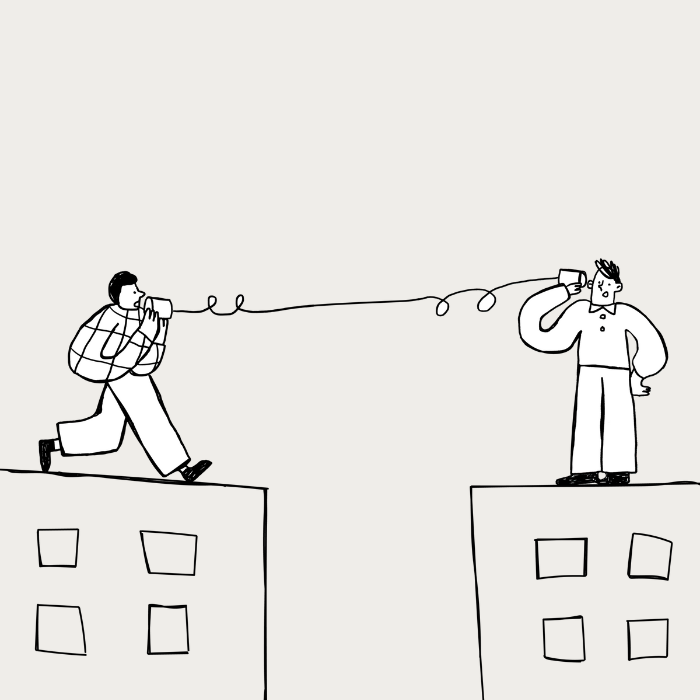
Everyone is entitled to an opinion, but people’s opinions can differ. That’s why it’s important of teach kids about civil rights.
Everyone has the right to be treated with civility and have their opinions heard, whether or not you agree with them; and you’ll stand your child in good stead if you teach them how to do this in a positive and respectful way.
We all find ourselves having to work or learn alongside people we might not particularly like. Life will always be like this. Regardless of how we feel personally, when we share a common environment we have to “get on”, unless we insist on making life unpleasant for everyone. This means approaching others with a positive, friendly attitude and using good manners when we interact with them. This is important for our children to learn. We need to teach them that in most cases, the better we treat someone, the more likely they are to respond positively back; and that being civil to people regardless of whether they are our friends demonstrates our maturity.
Conversely, teaching our children to disagree in a way that respects the dignity of others and their right to an opinion, and to accept constructive criticism in a positive manner, can assist them to manage people they do not particularly like and to handle challenging situations with confidence. To teach such skills with credibility as parents, we need to also be aware of how we deal with these situations, as modelling provides the most significant example to our children.
Use the models and verbal cues below to teach your children skills and strategies to use in such circumstances and simply adapt the language used to suit your child’s developmental stage.
burning issues
Everybody is entitled to an opinion but, on certain controversial topics, people’s opinions can differ vastly. We should teach our children that while they may feel quite passionate about the opinions they hold, they must respect that others feel equally passionate about theirs. To live happily with others, our children need to acknowledge others’ rights to express their thoughts on a topic. If they cannot change someone’s opinion through sound reasoning, then our children need to learn to accept this and agree to disagree. They also need to realise that while someone may disagree with them, this does not mean they should think badly of them.
model for expressing
differences of opinion
- Whenever your child feels the need to offer their opinion, encourage them to think ahead about what they want to say and rehearse it in their head before saying it aloud.
- Get them to consider whether what they want to say is offensive or hurtful. If it is, do not say it.
- When your child gives their opinion, make sure what they say is related to the issue.
- Teach them to use “I” phrases to indicate that they are giving their opinion or observations, not stating facts.
- Encourage them to use positive body language, including friendly eye contact, a respectful tone of voice, speaking only loudly enough to be heard and standing confidently.
- Remind them to listen without commenting, to never interrupt someone else to express their own opinion and to never ridicule someone else’s opinion or verbally attack them.
- If your child disagrees with the speaker, decide if they agree with any aspect of what the speaker has said, then state the part that they agree with first, before stating the points they disagree with.
- If your child does not agree with any aspect of what the speaker said, then teach them to start their sentence by indicating they have heard what the speaker said.
verbal cues for expressing
differences of opinion
- I agree with Blake regarding … however I’d prefer it if …
- I think what Leah said about … needs to be considered, but in my opinion …
- I understand Daria’s point about … but I do not think …
- I realise why Hamish thinks that … but I think …
critical success
Teach your child that when others comment on their performance, they can either take it as a personal attack and react defensively, or view it as an opportunity to find out how they can improve the things they do.
Correspondingly, when we offer our child feedback, we should do it in a way which shows respect for their feelings and does not knock their confidence. Destructive criticism labels the person, instead of describing their behaviour. This type of response is not a good way to build positive relationships and does not role-model constructive behaviour for your child to learn from either.
model for giving feedback
- Ask your child what specific aspect of their performance they want feedback on.
- When you give feedback look at them, smile and use a friendly tone of voice.
- Focus mostly on things your child has done well. Remember, they need to feel respected and able to maintain their dignity.
- Be specific in the feedback and focus on the behaviour, not their personality.
- Describe precisely what your child did well; don’t just say it was good.
- Do not comment on things your child cannot change (e.g., you’re too short for me to see you properly).
- Never compare your child’s performance with other people’s performances.
- Use ‘I’ statements to demonstrate that you are offering your opinion, not stating facts.
- Offer suggestions that will help your child improve. Do not give negative comments.
verbal cues for giving feedback
- I like the way …
- I think …
- Perhaps it would have been … if you …
- I feel …
- I noticed …
model for receiving feedback
- When your child is given feedback, their options are to completely agree and accept it; totally disagree and reject it; request more information; modify what the person said and partially disagree or agree; or delay
their response to give them time to think
- If your child gets feedback, teach them to stay friendly and remind them that the person’s suggestions are only their opinion and could be helpful, but your child does not have to agree with them or take them on board.
- Teach your child to stand confidently and maintain eye contact.
- If your child agrees with the comments and finds them helpful, remind them to thank the person and let them know they have helped.
- If your child disagrees with the person and thinks they are just being critical, then teach your child to only thank them for expressing their opinion and disregard what they have actually said.
- If your child feels someone is being destructive towards them with criticism, teach them to ask themselves: is the criticism focused on something specific I’ve done? Is there enough information for me to respond? Do I accept the judgement behind the criticism? Whose standards am I being measured against? How do I want to react?
verbal cues for accepting feedback
- I appreciate your advice.
- Thank you for giving me
your observations. - Your opinion will be valuable in helping me improve.
- I will take what you have said into consideration the next time I …
- Thank you for letting me know. I can see how you might think that …
- I do not want to say anything about that right now. I would rather discuss it later.
Paula Galey (M Ed Psych (hons) Hdip Tchg) is a teacher who specialised in working with students with learning and behaviour difficulties. She currently writes educational resources while raising her three children.`








